Planetary Radio • Nov 28, 2018
A Great Day for Space Explorers: The Landing of InSight
On This Episode
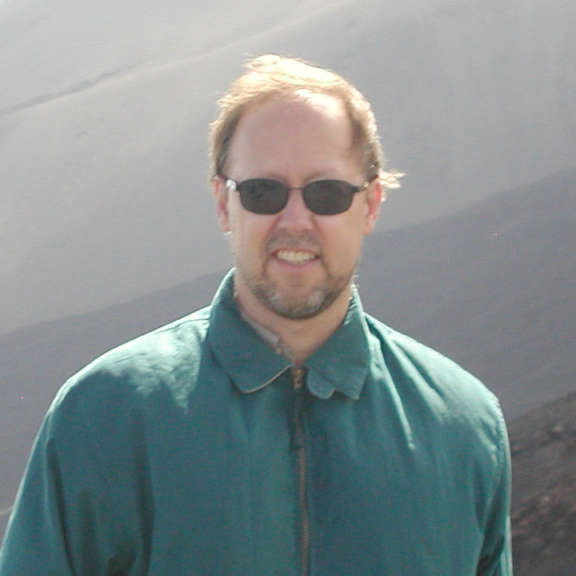
Bruce Banerdt
Principal Research Scientist and InSight Mission Principal Investigator

Bruce Betts
Chief Scientist / LightSail Program Manager for The Planetary Society
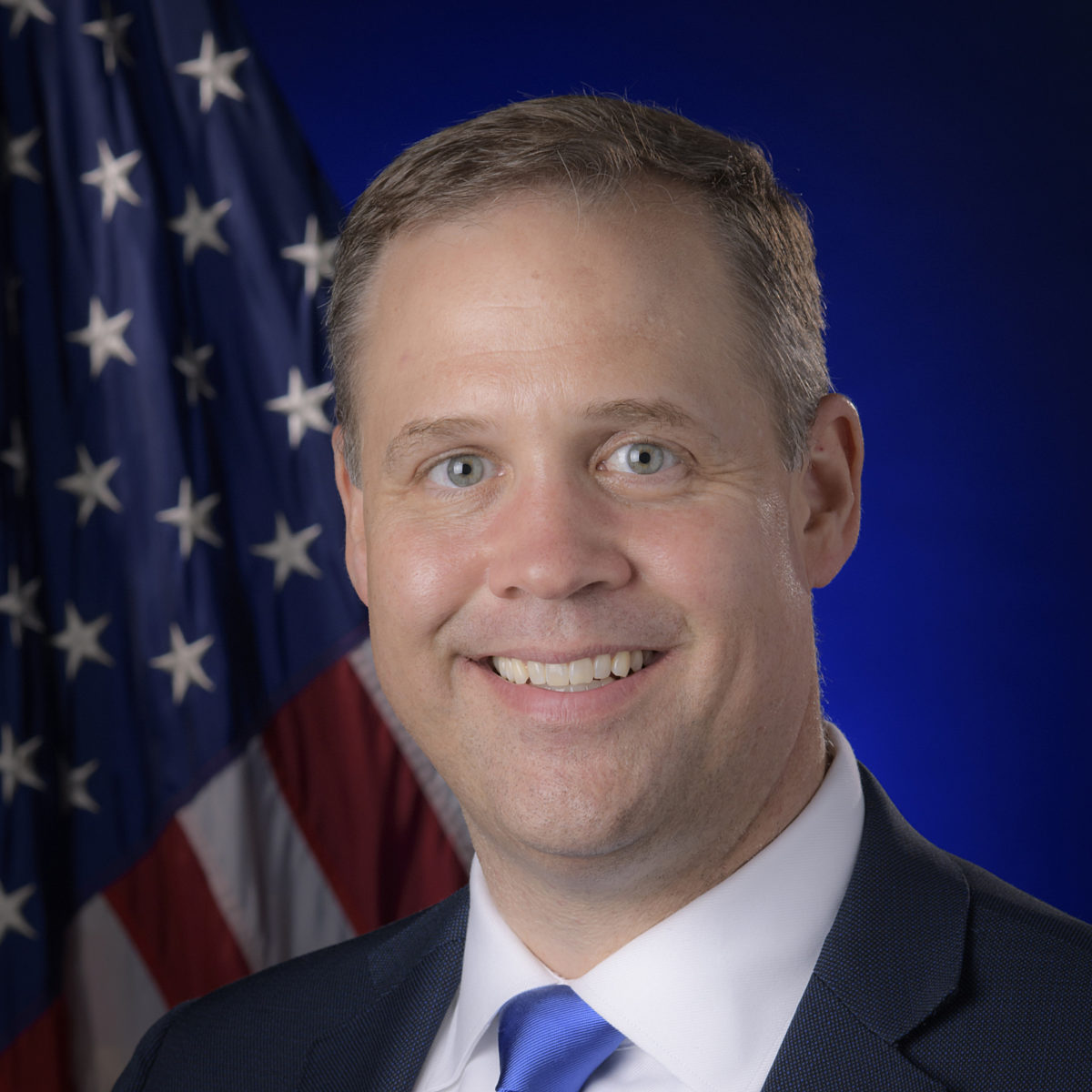
Jim Bridenstine
NASA Administrator

Gay Hill
NASA TV/JPL Anchorperson

Tom Hoffman
InSight Project Manager for JPL

Troy Hudson
Troy Hudson is a Planetary Geologist and Instrument Engineer for Jet Propulsion Laboratory
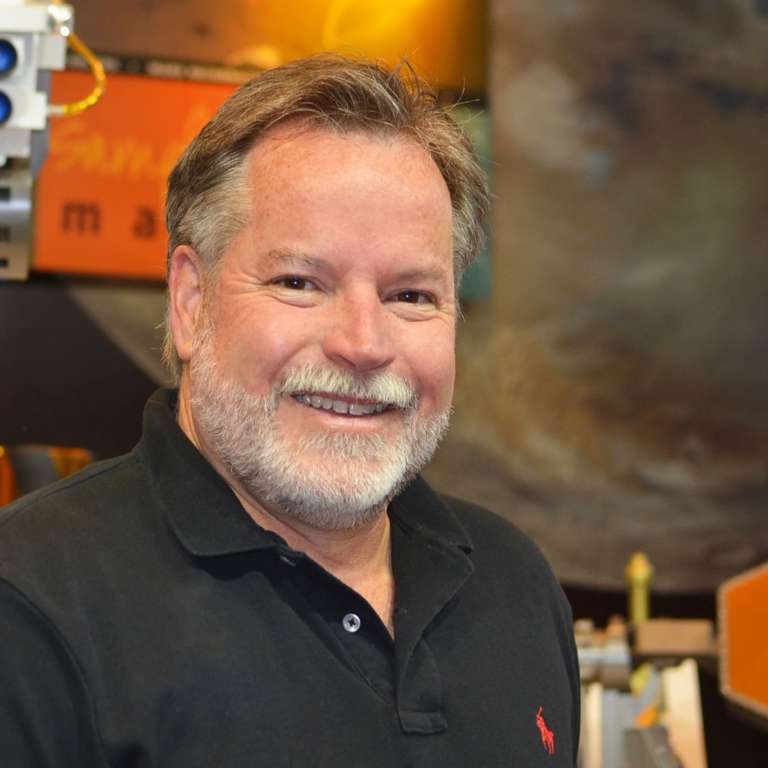
Rob Manning
Chief Engineer, Jet Propulsion Laboratory
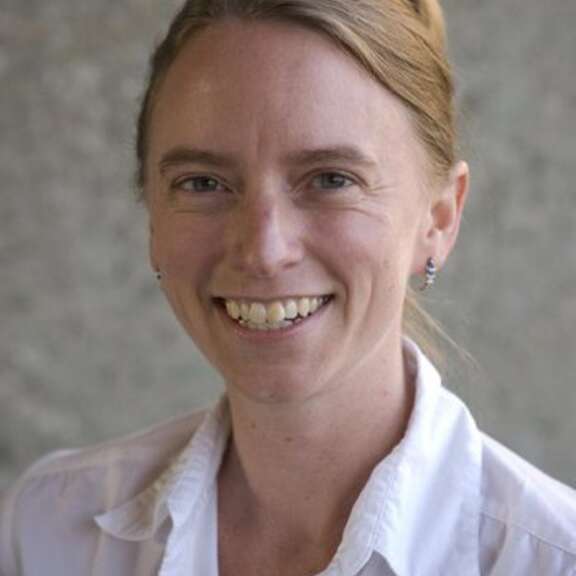
Jennifer Jackson
Professor of Mineral Physics for Caltech

Bill Nye
Chief Executive Officer for The Planetary Society

Mat Kaplan
Senior Communications Adviser and former Host of Planetary Radio for The Planetary Society
Join 1,000 anxious yet thrilled space fans at Caltech for our live InSight landing party. You’ll meet Mat Kaplan’s onstage experts and check in with Bill Nye and Emily Lakdawalla at the Jet Propulsion Lab. Then we’ll hold our breath as the spacecraft hurtles down through the Martian atmosphere in its seven minutes of terror, climaxing in a glorious touchdown on the Red Planet. This is a very special episode.
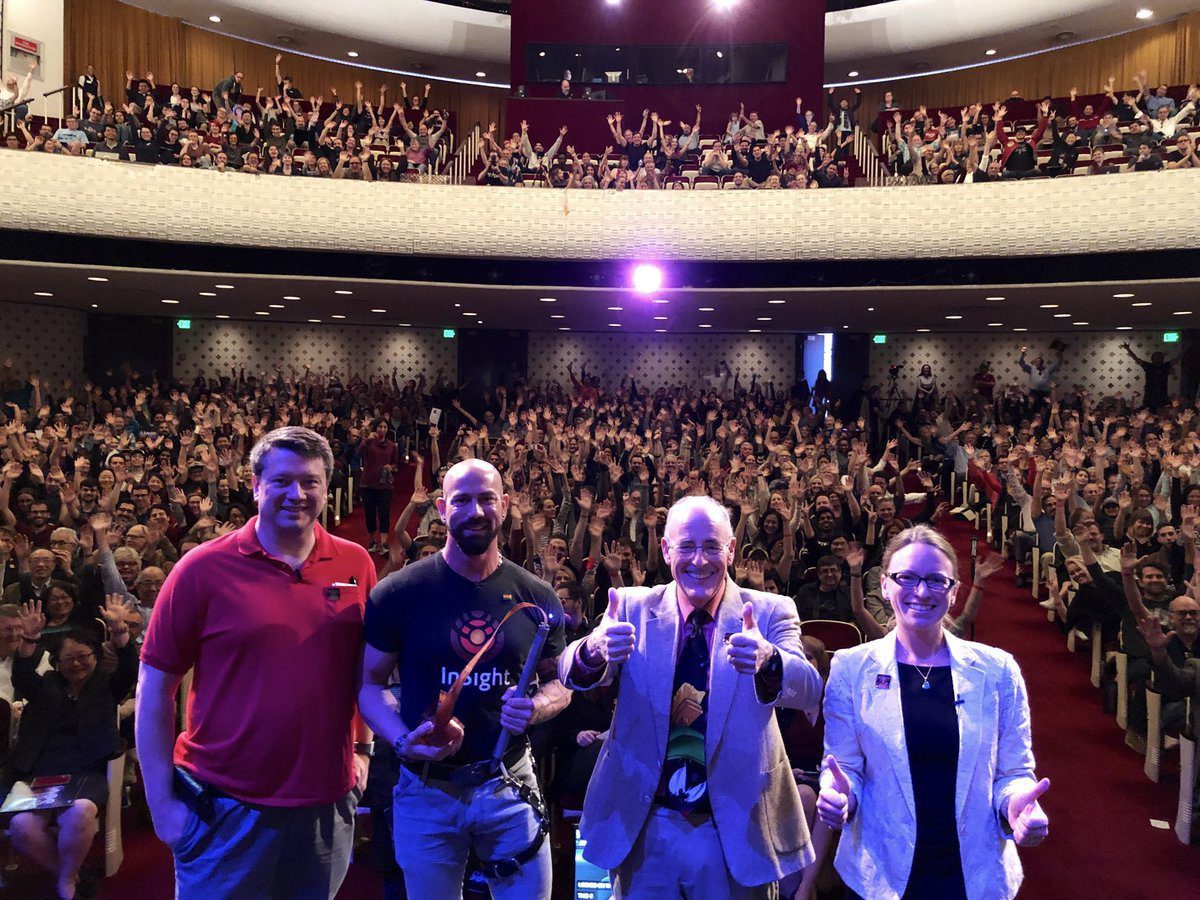
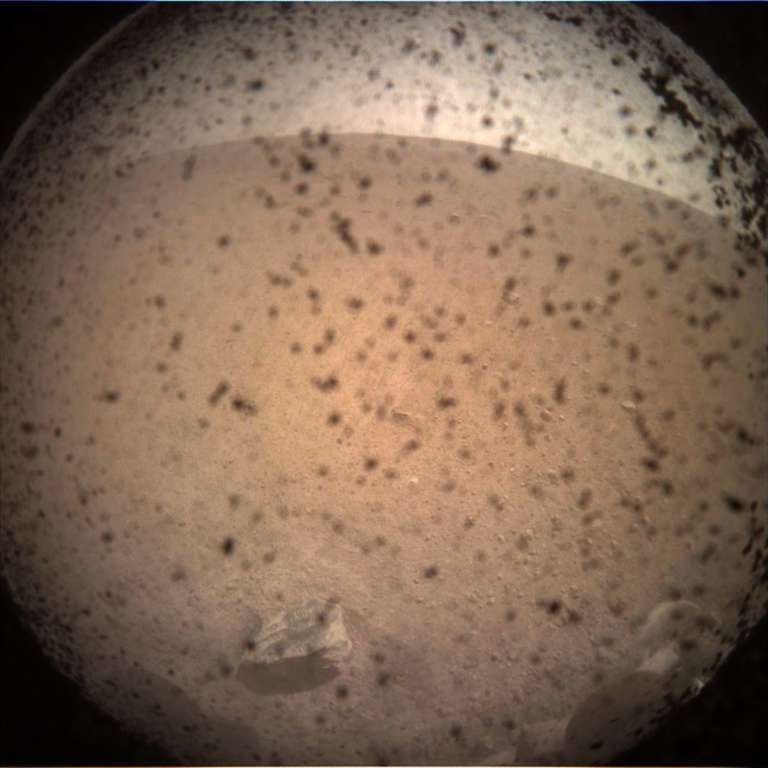
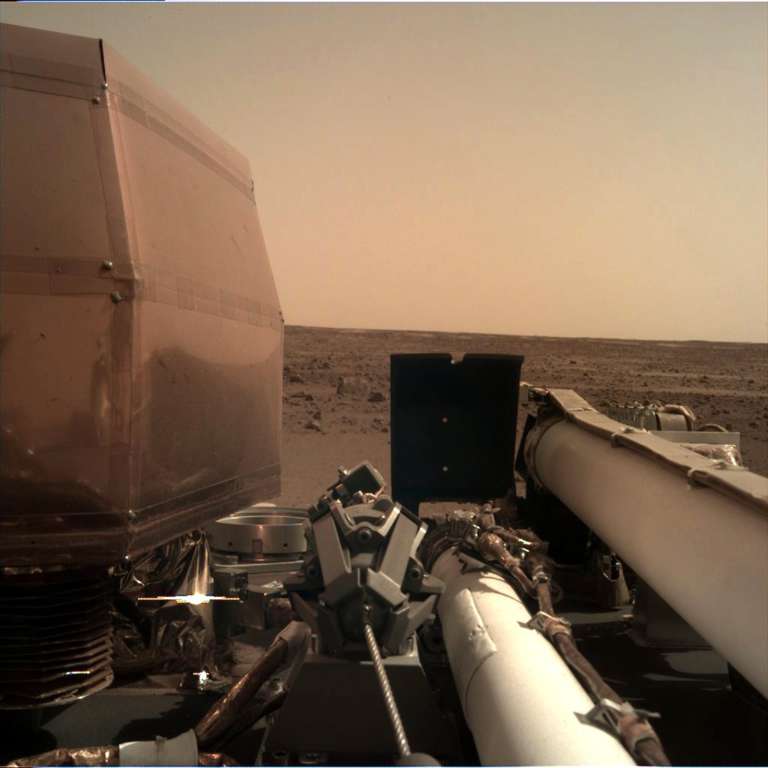
- InSight has landed
- New Cameras on Mars!
- VIDEO: We are on Mars! NASA Insight Landing at Caltech Beckman's Auditorium
- NASA InSight Mission
This Week’s Prizes:
A handsome Planetary Radio t-shirt from the Planetary Society Chop Shop store and a 200-point iTelescope.net astronomy account.
This week's question:
What did the InSight lander and some warriors from the Middle Ages have in common?
To submit your answer:
Complete the contest entry form at http://planetary.org/radiocontest or write to us at [email protected] no later than Wednesday, December 5th at 8am Pacific Time. Be sure to include your name and mailing address.
Last week's question:
What chemical elements were named after celestial bodies or the gods or goddesses for whom the bodies were named?
Answer:
The answer will be revealed next week.
Question from the November 14 space trivia contest question:
What were the most advanced creatures to fly around the Moon on the Soviet Zond 5 mission?
Answer:
The two most “advanced” creatures on board the Soviet Zond 5 lunar mission were Russian tortoises.
Transcript
[Mat Kaplan]: Are you ready to land on Mars? The landing of InSight, this week on Planetary Radio. Wow. Wow wow wow. Monday, November 26th, was a great day for science and space exploration. I'm Mat Kaplan of the Planetary Society, this week bringing you special excerpts of our intimate little landing party in Pasadena, California. One thousand men, women, and children united by their love of the final frontier. You'll hear from my terrific on-stage panel and from Emily Lakdawalla and Bill Nye reporting from JPL just before and after the landing, and you'll hear the most exciting portions of NASA TV's live coverage at the Jet Propulsion Lab. I've compressed some of those segments to save time, but I don't think you'll be disappointed.
We are at Caltech as if you didn't know in the beautiful Beckman Auditorium where we [00:01:00] are about to witness the landing of InSight, the first mission to the core of the Red Planet. In less than 60 minutes InSight is going to experience its own not quite seven minutes of terror. And we'll be riding along courtesy of NASA TV right over our heads here and our neighbor, the global heart of robotic planetary exploration, the Jet Propulsion Lab, which is operated by our host. Yeah. Let's hear it for Caltech.
Someone who needs no introduction had pre-recorded a welcome message for our anxious crowd in the auditorium.
[Bill Nye]: Bill Nye here, CEO of the Planetary Society. Welcome to Caltech, where we are anticipating a fantastic celebration as the InSight Lander lands on the planet Mars. It's another planet, people. This doesn't happen every day. This is a big deal. Now once it's there, InSight will be the first probe to study seismic waves on Mars, deep in the interior of [00:02:00] this other world, and we hope to learn more about how the old Red Planet formed. Some serious science is about to go down on another world. But first, the Lander has to land, that's why we are cheering and rooting together as we advanced space exploration in this next big step. As I often say, space brings out the best in us. And when these big moments in space exploration happened on other worlds, our world gets better. I'd like to thank Caltech for letting us use the beautiful Beckman Auditorium, and I'd like to thank all of you for coming out and sharing this moment. Back to you, Mat.
[Mat Kaplan]: Thank you, Bill.
Then it was time to meet our three in-person panelists.
The first person I'm going to bring out is a professor of mineral physics in the Division of Geological and Planetary Sciences right here at Caltech where she does amazing science in the seismological laboratory. Her research includes revealing the mysteries of the interior [00:03:00] of our own warm planet. She uses lasers, X-rays, and fantastically powerful diamond anvil cells to simulate Earth's violent core. We'll find out more about those from her in a few minutes. Please help me welcome Dr. Jennifer Jackson. He comes to us directly from the team that has sent InSight to Mars, its destiny on Mars today. He is both a distinguished planetary geologist, and one of the engineers who has participated in the creation of the instruments that will take us inside the Red Planet. Joining us here from JPL, please welcome Dr. Troy Hudson. And now the only other person other than me who has been on all 841 episodes over 16 years of [00:04:00] Planetary Radio. He is the Planetary Society's Chief Scientist, the leader of our Education and Outreach Program, and the Program Manager for our LightSail solar sail, which were pretty jazzed about. Please welcome my friend and colleague, the guy who received his PhD right here at Caltech, Dr. Bruce Betts.
One of the many JPL guests heard from was NASA Administrator and former Congressman Jim Bridenstine. Here he is talking with NASA TV anchor person Gay Hill. You'll hear Gay a lot over the course of our coverage.
[Jim Bridenstine]: I have witnessed these, I should say from the sidelines, for many years. This is going to be the eighth time that we have a successful landing on Mars, everybody knock on wood.
[Gay Hill]: That's right.
[Jim Bridenstine]: But this is the first time for me to participate as the Administrator. So it's very exciting very much.
[Gay Hill]: Excited? Nervous?
[Jim Bridenstine]: Not nervous, excited. Look at the amazing people here.
[Mat Kaplan]: InSight has been the dream of mission Principal Investigator [00:05:00] Bruce Banerdt for forty years. You may remember Bruce as a guest here on Planetary Radio last May. He also narrated a video shown early in the NASA TV landing coverage.
[Bruce Betts]: InSight is a mission to Mars, but it's much, much more than a Mars mission. In some sense it's like a time machine. It's measuring the structure of Mars that was put in place 4.5 billion years ago, so we can go back and understand the processes that formed Mars Just shortly after it was accreted from the solar nebula. By studying Mars, we'll be able to learn more about Earth, Venus, Mercury, even the Moon, even exoplanets around other stars.
[Mat Kaplan]: Gay Hill also talked with the other leader of the InSight Mission.
[Gay Hill]: He's the project manager Tom Hoffman. Seven years and today's the day.
[Tom Hoffman]: That's right seven years, but we're just a little over 40 minutes now, and we're going to be on the surface. It's going to be awesome.
[Gay Hill]: Really exciting stuff. All right. So let's talk about InSight. It's using tried-and-true technologies based on Phoenix. This [00:06:00] time there's a bigger challenge with communication, correct? Normally, we have an orbiter that can give us bent pipe communications, but it's different this time.
[Tom Hoffman]: That's right. Most of the time when we've landed recently, we've had Mars Odyssey which can do bent pipe communications, and so we get real-time data as we go through EDL. And we've come to expect that and actually really really want that. In this case our primary technology, primary orbiter is Mars Reconnaissance Orbiter. And so what that's going to be doing is actually will be listening to us on the UHF. If you go to the video you can see this. MRO will be listening to us and be getting all the primary data and it will send it back to us. Unfortunately only at three hours after we land.
[Gay Hill]: So it doesn't give us the bent pipe live information as it happens.
[Tom Hoffman]: It doesn't. We have a couple of other sources that were looking at. We have Green Bank Observatory in West Virginia. Max Planck Observatory in Effelsberg, Germany which will be giving us UHF, but those only give us a couple of different points in time. And so we did something kind of cool this time. We brought along [00:07:00] a couple of CubeSats called MarCO, and so hopefully they're both working great today.
[Gay Hill]: Oh fantastic.
[Tom Hoffman]: So we're hoping that they're going to continue to work all the way through EDL and they will be giving us a real-time feed. So we can show how that works on the next video here. So you can see here's InSight with its cruise stage getting close to Mars, but we have two stalkers following us. They've been following us since we launched, they launched on the same launch vehicle as us and so you can see the green there is we're sending UHF signals to them and then they turn that around and send a much stronger signal back to Earth. We can't communicate on UHF direct to Earth with a signal that tells what's going on in the spacecraft, but MarCO can, if it works for us, all the way down to the surface. We're going to have some great information coming from MarCOs.
[Gay Hill]: So MarCO is basically trying to fill that gap that we would have had if we had live communication coming down to us.
[Tom Hoffman]: Absolutely.
[Gay Hill]: So if it does not work, does it affect InSight's mission at all?
[Tom Hoffman]: No, not at all, we;'ll just be doing a little more nail-biting. But right now it looks like it's going to, it's going to be working but [00:08:00] it doesn't impact InSight at all. We have one final way that we're going to know that we've got successfully to the ground, which is the spacecraft will phone home. Once it gets down to the ground is gonna have gone seven months through cruise, seven a half minutes of terror and it's going to call back and say, "hey, I'm on the surface. I'm feeling pretty good. Everything looks good so far."
[Gay Hill]: And also to prep the audience, they're not... even after landing, we're not out of the woods just yet, correct?
[Tom Hoffman]: Not just yet. We have one more step that we have to do. We have to let the dust settle, quite literally. We're going to kick up a lot of dust when we land. We need to let that dust settle before we want to unfurl our solar arrays. We're a hundred percent solar powered, so it's very important that we get those out. Unfortunately both MRO and MarCO will be out of view by the time that we have those completely unfurled. And so we're going to have to wait five and a half hours until Odyssey comes by and tells us that, yes indeed our solar arrays are out. So we'll definitely have a celebration we get successful landing, but we're going to have to temper that just a little bit and wait about five and a half hours to [00:09:00] know absolutely for sure we're in good shape.
[Gay Hill]: So we have immediate knowledge if we have the MarCOs. So just to run it through it once again, what's going to happen with EDL? We've got some, we have the video to show how exactly is this all going to play out in six and a half minutes and we can roll the video.
[Tom Hoffman]: Okay. Yeah, so you can see here we're attached to the cruise stage. We drop that off, say thank you for the ride to Mars, it burns up in the atmosphere. You can see it gets very hot on our heat shield. We're getting up in some places, maybe 3,000 degrees fahrenheit as we go through this. We're on the heat shield for about 4 minutes, that dissipates about 90% of the energy that we need to dissipate before we get to the surface. Then we pop our parachute, we're going to about 850 miles an hour when we pop a parachute. We're on that for about 2 minutes, then we'll drop off the heat shield, we'll start acquiring the ground with our radar very much like an F-16 fighter jet radar. The legs will pop out. We'll start descending, we drop for just a second, which is very terrifying for me. Our [00:10:00] descent thrusters, we have 12 of them, they're 68 pound thrusters, start thrusting and dropping us to the ground slowly, slowly. We drop down going only 5 miles an hour. So in that six and a half minutes of terror, which is a little less than the seven minutes so that's great for me, we go from 12,300 miles an hour at 75 miles above the surface of Mars, we get to the surface we're five and a half miles an hour.
[Mat Kaplan]: And then there is a certain honored tradition at JPL. Here's Gay Hill talking with Entry Descent and Landing Systems Engineer Julie Wertz.
[Gay Hill]: And I understand that the peanuts are going to be passed in there pretty soon?
[Julie Wertz]: I believe that's that's the idea. Yeah, we'll be passing around the peanuts very soon after that. For those of you who don't know the JPL peanuts are a tradition that gives us a little bit of extra luck on our critical events. So if anybody out there wants to join in on peanuts and give us some extra good luck peanut vibe, we'd love to have it.
[Gay Hill]: Well there's a story behind that, that way back when in the early days of JPL there were [00:11:00] six Ranger Missions to the Moon that failed. But then with Ranger 7 somebody passed around peanuts.
[Julie Wertz]: Yeah. Yeah, and it worked and you don't mess with what works. So it's not a superstition, it's a tradition. And we just give ourselves a little bit of extra.
[Mat Kaplan]: Back in Beckman Auditorium, it was time to talk with someone you hear regularly on our show.
We have Emily Lakdawalla, Senior Editor. We also call her our Planetary Evangelist at the Planetary Society. We don't have video but we think we've got her on the phone. Emily, are you with us?
[Emily Lakdawalla]: I am, hello everybody.
[Mat Kaplan]: Great. You're coming in great here. So, where are you at JPL?
[Emily Lakdawalla]: I am right now at the von Kármán Auditorium, which ordinarily is a museum, but it's dressed up as a media room as it always has for major events at JPL. I'm surrounded by media friends of mine from different outlets like National Geographic and Aviation week and NPR and LA times and it's just, it's always fun to reunite with all these people for every happy event in space [00:12:00] exploration.
[Mat Kaplan]: Is the anticipation as great there as it is here in Beckman Auditorium.
[Emily Lakdawalla]: It's really funny. Everybody's kind of nervous and you know media, they have to prepare both a "It Landed!" and an "It Crashed!" story. So everybody's feeling kind of both things right now. We're going to wait until nature does its thing and we'll have to see if InSight successfully lands today. I think everybody expects that it will but you know media, they always have to plan for the worst.
[Mat Kaplan]: Yeah. Emily, we know that you are exactly where you want to be right now. What are you most looking forward to other than the landing itself?
[Emily Lakdawalla]: I am always, I look forward to the pictures. There's going to be a picture taken by each lander camera. There are two of them on the Lander. They've been hedging their bets about whether we'll get those right after landing or not, it depends on how well the transmission goes between the Lander and the orbiters. There also could be an image from HiRISE showing the InSight Lander under its parachute [00:13:00] that one would be available at the earliest a couple of hours after landing, could be up to 48 hours. So we'll wait and see if they manage to pull off that feat for the third time in a row. And then I'm just looking forward to seeing all of my scientist friends be able to relax finally because they're all really keyed up and on edge right now because it's the scariest thing for them for the rest of the mission. But everybody's in good spirits and really anticipating a good day on Mars today.
[Mat Kaplan]: Just one more question about those two cameras that are on the Lander, which were not essential for science, right? But people like you who do image processing, working with these images that come back from missions like InSight you're going to have a lot of fun with these, right?
[Emily Lakdawalla]: I hope to. You know, these cameras, there are two pretty small ones. They're actually flights spares from the Curiosity Rover. Curiosity has Navcams on its mast and Hazcams on its belly and these are two flight spares—one Navcam, one Hazcam—from Curiosity. They just tore off the back and put in the color detector instead of black and white ones. So we'll be able to see a flat landscape [00:14:00] in nice red color like Mars is and so I'm looking forward to making animations of the of the Lander setting out instruments very carefully, and I'm looking forward to watching the shifting of the Shadows with the Sun rise and Sun set. But of course, we won't see a changing landscape as we do on the rovers because this Lander once it lands it's not moving ever again.
[Mat Kaplan]: Alright, Emily will let you get back to what you really want to do while you're over there with von Kármán. Have a great time and we'll be watching along with you.
[Emily Lakdawalla]: All right, go InSight!
[Mat Kaplan]: Go InSight, Ad Ares. That's Emily Lakdawalla, Planetary Evangelist.
InSight instrument engineer Troy Hudson brought a couple of cool props to the Beckman stage. Jennifer Jackson and Bruce Betts will also get in on the conversation.
What have you got there?
[Troy Hudson]: So this is a 3D printed full scale model of HP3. That's the Heat Flow and Physical Properties Package, the instrument that was provided to InSight by the German Space Agency. [00:15:00] And it is the heat flow probe, it is what we will use to take Mars's temperature. So this support structure here houses the mole, which is the burrowing device, and tethers and the number of other ancillary instruments. And this whole thing gets picked up by the robotic arm from this grapple point here. It's the third thing to be deployed, gets picked up and placed on the ground and then the mole which starts out inside this cylinder, begins its journey hammering its way millimeter by millimeter into the ground over the course of about 30 days making measurements as it goes. So this is the 3D model that shows the interior structure of the mole and this here is...
[Mat Kaplan]: Is heavy.
[Troy Hudson]: It's heavy. I'm going to have to pull that out there. This full-size weighs about as much as a pair of shoes and takes about as much power as a Wi-Fi router. That enables us to dig deeper on Mars than we have ever [00:16:00] gone on any other body.
[Mat Kaplan]: Five meters, about 16 feet. Pretty amazing. Why is it important to get the mole down that deep and sense the temperature all the way back up?
[Troy Hudson]: So what the thing we're looking for is the amount of heat coming from the interior of Mars, but at the surface you have daily and seasonal temperature variations. The Sun illuminates the surface and causes temperature fluctuations and those are noise for us, they swamp out that signal. So to see the signal, the heat from the interior, we have to get deep, deeper than those surface disturbances. And on Mars given what we expect the thermal properties of the soil to be like that'll be somewhere below about two and a half meters. So we need to get to three to be confident we can do the science. We have enough tether to take us to five.
[Mat Kaplan]: I know you've been even more involved with those seismometers, those amazingly delicate—well not so delicate but sensitive—seismometers. We're going to come back.
[Troy Hudson]: They're both.
[Mat Kaplan]: Yeah, we'll come back to [00:17:00] that in a few moments. Speaking of seismology, Jennifer. I mean just what we've talked about so far analyzing the heat flow from the core of Mars. Is this the same kind of data that we've learned a lot from here on Earth?
[Jennifer Jackson]: Oh, yes. Yeah on Earth what we've been fortunate to have are multiple heat sensors in different parts of the planet and what we know about Earth is that it varies from continental regions to of course the mid-oceanic ridge region where it's a lot warmer. And on Mars, we expect that the variations may be smaller because the activity is thought to be less. I mean, that's one of the very exciting things actually to have these measurements from Mars because this could be a snapshot of what Earth was like 3 billion years ago.
[Mat Kaplan]: Wow. We need to get back to NASA TV, but I still have one other question for you Bruce and it's [00:18:00] about the significance of those MarCO CubeSats. We know a little bit about CubeSats in the Planetary Society. Why are these so significant?
[Bruce Betts]: The MarCO CubeSats are significant because they're the first interplanetary CubeSats. CubeSats have become very popular in the last 10 to 20 years in Earth orbit. They're used by universities, they're used by agencies. But this is the first time they'll be going truly interplanetary and so is... more than anything their technology demonstration that you can you can do it. And then hopefully they will return data in real time as well.
[Mat Kaplan]: With the clock still counting down, I took time to acknowledge a few special guests in our audience at Caltech's Beckman Auditorium.
I know that here someplace is Charlie Kohlhase. There he is, are stand up Charlie, because there is a navigator par excellence. He figured out how to get Voyager on its Grand Tour. [00:19:00] And one more selfish one because you heard us say that we've had 16 years of Planetary Radio, the series that I have hosted and produced over that time, the 16th anniversary for the show was yesterday and the guy who was responsible—thank you—the guy who was responsible though for making that show happen, giving us the permission to go ahead to do it, who was also the first guest on that show and has been on it many times, is the Director Emeritus, Executive Director Emeritus of the Planetary Society. Dr. Lou Friedman, who's sitting right over here. Okay. And I really debated doing this because you may hate me doing this, but I'm hoping that there's someone in the audience who can put a good word in for InSight with some all-powerful Universe-spanning intelligence called Q. John de Lancie is over, sitting down [00:20:00] over here.
Just time enough for one more conversation with Troy Hudson, Jennifer Jackson, and Bruce Betts before the final countdown to the landing. Settle in, we're going to go right from our on-stage conversation into the NASA TV coverage of the last critical, nail-biting moments of InSights perilous descent.
Those seismometers, Troy, give us an idea of just how amazingly sensitive these are.
[Troy Hudson]: The types of movement that the seismometers can see, it's the sorts of differences in space smaller than a hydrogen atom. But what that means in practice on Mars, Mars has tides. There's a moon, one Mars' moons, Phobos. It's very small, it's about the size of Los Angeles, but it orbits very close to the surface. And as it orbits, it actually makes the ground move up and down, kind of like the Moon does on Earth with the oceans and the ground but on Mars [00:21:00] no oceans just the surface. And it's less than a millimeter of movement. Nothing you would ever, feel nothing you would ever see, but the seismometer can see it. And by seeing this flexure of the ground we get an idea of how thick the crust is where we've landed. So it's very precise and very sensitive. And that's one of the reasons why we have to protect it so much, why we have that wind and thermal shield, that white dome which is sort of our portable hold...
[Mat Kaplan]: It's almost like a bell jar that was down over it.
[Troy Hudson]: Right right, protects it from the Sun and the wind. Then within the seismometer itself, there's an evacuated container and this container is where the most sensitive components are and they have to be at a pressure even lower than Mars' atmospheric pressure ,like the vacuum of space, in order to work properly. So we had to bring that container with us. And that's one of the things that caused us some issues back in 2015.
[Mat Kaplan]: I just got to say again, the width of a hydrogen atom.
[Troy Hudson]: Yeah.
[Mat Kaplan]: How does this compare with seismometers [00:22:00] that we've been using for years here on Earth?
[Jennifer Jackson]: They're similar in sensitivity. But the the coupling is going to be a little bit different and this is why we're... this is actually the first time that we can get a seismometer that's coupled to another planet. It's been about 50 years since the Lunar seismometers were deployed. And about a 130 or so years that the first seismic, teleseismic event was detected and analyzed here on Earth.
[Mat Kaplan]: 130 years? Where was it? Where was it detected?
[Jennifer Jackson]: Just about. It was detected in Europe. And since then there have been tens of thousands of seismometers deployed over the entire planet. This is just a really special, an incredible opportunity to be able to measure the interior of another planet to measure the core, the size of the core. [00:23:00] We don't know how large the core is or whether it has some amounts of melt inside of the core. These measurements are going to be key for understanding our own terrestrial planets in our solar system, Mercury, Venus.
[Mat Kaplan]: How can one seismometer, Troy, tell us all of this if things go well about the interior of a planet that's, you know, maybe it only a third the size of Earth but still pretty big?
[Troy Hudson]: Sure. Well just like a sonogram allows you to see inside your body by looking at vibrations of sound waves, a seismic recorder, a seismic station does the same. It looks at the movement of waves,seismic energy that moves through the planet. If you've ever like taken any little class in seismology in the past you needed to have at least three stations to be able to determine the location of an earthquake. It turns out with advances in the [00:24:00] sensitivity of the instruments and also computer models and our ability to model the way waves move through a three-dimensional structure like a sphere we can in fact determine the position and depth nd distance to a quake using only a single station. Now the seismometer is more than just one instrument, there's actually six independent seismometers that are coupled together in this small package and they can sense exactly what direction the waves are coming through in three dimensional space and by looking at that movement. We can determine where the quake occurred, for example. Yes we would love to have more than one seismometer on Mars. And there were proposals in the past to put a network of seismometers on Mars. But as I like to say one is infinitely larger than zero so we will be we will be taking a great leap forward in our understanding with this one seismometer.
[Jennifer Jackson]: And it could pave the way for future deployments of more seismometers [00:25:00] on Mars.
[Mat Kaplan]: Because we're going to get such great data from just having one.
[Troy Hudson]: Right, we've seen on Mars that there are fault lines indications that there have been quakes in the past and they're globally distributed but clustered in certain locations. And one thing we hope to find out is what areas on Mars are more seismically active than others and so in the future we might have a better idea of where on the planet we would get the best data.
[Mat Kaplan]: Yeah, so Mars, maybe not as dead as was once thought but also I think we're going to be picking up the impacts from meteorites too, right?
[Jennifer Jackson]: Mm-hmm, that's correct. Also the wind dust devils could stir up enough pressure to couple with the surface and give some insight to the crustal properties.
[Troy Hudson]: It'll actually give us a better understanding of the meteorite flux based upon what they detect over the course of the couple year length of the mission.
[Mat Kaplan]: I wanted to go to you Bruce [00:26:00] because as we heard this is the eighth, this will be the eighth successful landing if it happens. Through all of these and of course all of the orbiters, we have a flotilla of spacecraft circling Mars including Mars Reconnaissance Orbiter with that amazing HiRISE camera that we hope might just get that shot of InSight descending to the surface. What has the Planetary Society's role been in all of this as an outside, but very supportive, organization?
[Bruce Betts]: It's been multi-dimensional. Part of what we do is advocating for space exploration trying to support programs including the Mars program, we've been involved with education and public outreach with a number of missions including the Mars 2020 Rover coming up and the Mastcam-Z instrument. Jim Bell, the President of the Planetary Society, is the Principal Investigator and hey, Jim. And then we are [00:27:00] involved with Emily and the rest of our team with public outreach and reporting on the development of these missions and also the results from them and basically trying to get the public excited and involved and connected to space exploration. That's kind of what we're all about.
[Mat Kaplan]: And just one more plug for the 2020 Rover and maybe the Society that finally, finally on that mission is going to carry something to Mars which people way back, way way back toward the beginning of Lou Friedman's time and our other founders, Carl Sagan, they've been wanting to hear from the surface of Mars.
[Bruce Betts]: Yeah, so we'll have a ferret and a weasel. No, it won't it will have microphones for the first time. We flew going back to Mars Polar Lander, the Planetary Society flew a Mars microphone inside one of the instruments, Mars Polar [00:28:00] Lander being the one major unsuccessful US NASA Mission and so there is a microphone on Mars. It crashed. There is a microphone on Phoenix that wasn't turned on. So there's two microphones on Mars, little known fact, but there for Mars 2020 Rover there are hopefully two more that will be functional microphones, one in the SuperCam instrument and one tied to the Entry Descent and Landing process. But we've always, since Carl and Lou and Bruce, we've always been looking for this other sense. We get the beautiful images, we see with our vision but to actually hear what's going on to add that to the feeling of Mars is a real place. We're looking forward to it. We're excited.
[Mat Kaplan]: Yeah. I left out Bruce Murray, the third of the co-founders of the Planetary Society who of course was on this stage many times and was the Director of the Jet Propulsion Lab during a very critical time in its [00:29:00] existence.
[Bruce Betts]: Caltech professor and...
[Mat Kaplan]: Your professor. Yeah.
[Bruce Betts]: Yes. Yes my PhD advisor.
[Mat Kaplan]: Some of the best fun I've ever had was hearing Bruce make fun of you when the two of you were together.
[Bruce Betts]: He was very good at it. Lot of information to work with.
[Mat Kaplan]: Okay, we have reached the point where we're going to pick up the NASA TV broadcast once again, and we're going to stick with this now for quite a while. When we come out of this hopefully we will have heard that InSight has successfully landed and we may even see an image from that brand new visitor to the Red Planet. So let's go ahead and bring that up.
[EDL Communications]: ...as expected the DSN has LOS inside X-band.
[Christine Szalai]: The vehicle has also performed the turn to entry maneuver. The vehicle is turning away from a Sun pointing attitude and oriented itself to enter the Martian atmosphere.
[Rob Manning]: This is a big First Step getting just getting the cruise stage separated. It's [00:30:00] now after the vehicle turns itself to the right orientation. The cruise stage is now going to be getting further and further away until it's about three or four football fields away and will burn up in parallel as the vehicle enters Mars.
[Mat Kaplan]: Now you saw him earlier. That's Rob Manning. No one on this planet knows more about how to put things down on Mars without having them fall into pieces. He is the expert on landing on Mars. He also happens to be one of the nicest guys on this planet.
[Gay Hill]: ...coming into the atmosphere.
[Rob Manning]: Exactly. It'll be both provide a source of drag but also thermal protection because it gets over 1,500 degrees Celsius on the top of the on this heat shield, very very hot. But on the inside of heat shield is maybe only a fraction of your, few degrees above room temperature. So it's a wonderful protective device to keep our Lander safe.
[Gay Hill]: Alright, so the next thing we're standing by for is entry.
[Rob Manning]: Entry, getting through the going to the top of the atmosphere, gradually slowing [00:31:00] down. Right now the vehicle's just now beginning to, will be very soon will be beginning to feel the atmosphere touching it.
[Mat Kaplan]: Troy. Aren't you having second thoughts of doubt about standing with your team there JPL?
[Troy Hudson]: I've been on this mission for nine years myself and there's a lot of people both from JPL and my colleagues in Germany that I would love to be with them. But I'm here with my family. I'm here with all of you and I'm going to be working with them on Mars for the next several months. So it's, I'm almost to Mars. I wouldn't rather be anywhere else.
[Radio Science]: Radio science reports dropping carrier power as expected
[EDL Communications]: MarCO A and MarCO B have telemetry.
[Christine Szalai]: We are now receiving InSight telemetry via the MarCO relay.
[Bruce Betts]: By the way, [00:32:00] because of the eight minutes away inside on the surface one way or another.
[Mat Kaplan]: It's already happened in the real world.
[Christine Szalai]: This data will provide detailed information about the state of the spacecraft throughout EDL.
[Troy Hudson]: This is wonderful news. This this will allow us to give some, if this continues working all the way to the ground and beyond we might even see a first picture from the surface of Mars.
[Jennifer Jackson]: Wouldn't that be great?
[Troy Hudson]: Very soon...
[Christine Szalai]: Atmospheric entry on my mark. Three, two, one, mark.
[Mat Kaplan]: You want to hold hands?
[Christine Szalai]: In approximately one minute InSight is expected to reach its maximum heating rate. Plasma blackout is possible during peak eating and could cause the temporary drop out of telemetry.
[Mat Kaplan]: Bruce just real quick explanation, plasma drop out.
[Bruce Betts]: So as the spacecraft is coming through the atmosphere it heats up the atmosphere at [00:33:00] ionizes and makes it so the radio waves don't get out until it slows down and stops doing that.
[Rob Manning]: ...does interfere with the radio reception. So it's possible that MarCO will lose that signal while it's going through this very hot entry.
[Radio Science]: Radio science reports plasma blackout as expected.
[Mat Kaplan]: Troy do you know about how fast InSight was going when it hit the atmosphere?
[Troy Hudson]: 13,000 miles an hour.
[Christine Szalai]: ...still receiving InSight telemetry via MarCO. InSight has passed through peak deceleration. Telemetry shows the spacecraft saw about 8 Gs.
[EDL Communications]: MarCO Alpha and MarCO Bravo maintain lock.
[Radio Science]: Radio science reports carrier detected.
[Gay Hill]: Several different communications coming in.
[Christine Szalai]: InSight is now traveling at a velocity of 2,000 meters per second.
[Rob Manning]: The next big step is parachute inflation.
[Christine Szalai]: InSight is now traveling at 1,000 meters per second.
[Rob Manning]: Very close...
[Christine Szalai]: Once InSight slows to about 400 [00:34:00] meters per second it will deploy its 12 meter diameter supersonic parachute. The parachute will deploy nominally at about Mach 1.7.
[Radio Science]: Radio science reports sudden change in doppler.
[Mat Kaplan]: That's good.
[Christine Szalai]: ...observing signals consistent with parachute.
[EDL Communications]: MarCO Alpha and MarCO Bravo maintain lock status.
[Troy Hudson]: So the radar's on, they dropped the heat shield, and the legs have been extended. You know, it's coming down on its parachute. This is when they hope to use the HiRISE camera the high-resolution camera on the Mars Reconnaissance Orbiter to take a picture of it while it's on-chute. We were able to do that with Phoenix and with Curiosity. The geometry is a little less favorable where the spacecraft are right now, but we still hope we can get that image.
[Mat Kaplan]: If you've not seen those images. They are some of the most [00:35:00] amazing photos ever taken.
[Christine Szalai]: ...we have locked on the ground. Lander separation commanded, altitude 600 meters. Gravity turn, altitude 400 meters. 300 meters. 200 meters. 80 meters. 60 meters. 50 meters, constant velocity. 37 meters. 30 meters. 20 meters. 17 meters, standing by for touchdown. [00:36:00] Touchdown confirmed.
[Mat Kaplan]: We are on Mars!
[Gay Hill]: We've cut over to the camera over in Times Square. Boy, people are weathering the rain to see this.
[Mat Kaplan]: It never gets old.
[Bruce Betts]: Oh my God.
[Gay Hill]: So we're standing by. After touchdown, it waits a couple of minutes to give us an X-band beep and so we are standing by for that. It's a communication that comes directly to Earth from InSight.
[Rob Manning]: Yes. And and it goes to the Deep Space Network. There's also something that might be happening [00:38:00] now if we're very lucky InSight might be able to relay an image or a partial image taken just a few, a couple minutes after landing. So I'm standing by hoping to see that.
[Bruce Betts]: We expect very flat field they landed in. Flat place, we don't need the fancy geology.
[Mat Kaplan]: Supposed to be boring Landing site, right? On purpose.
[Bruce Betts]: Well, that was the goal, Mat.
[Jennifer Jackson]: But not too far away there's a volcanic site that we're to get some information about the roots of that volcano.
[Mat Kaplan]: So are the volcanoes on Mars dead or not?
[Jennifer Jackson]: We will find out.
[Troy Hudson]: It's hard to date things precisely on Mars because dating rocks and figure out exactly how old or is a very complicated process that we haven't been able to automate yet. Has to be done in the lab here. The volcanic provinces on Mars tend to be many hundreds of millions of years [00:39:00] old by our estimates, but those aren't precise yet. There may have been some lava that came out on the surface more recently, but the really big volcanoes are quite old.
[Bruce Betts]: They got it.
[Troy Hudson]: Smooth flat and boring just like we want.
[Mat Kaplan]: And not bad considering that the lens cover.
[Jennifer Jackson]: Oh wow.
[Troy Hudson]: Yay, MarCO.
[Bruce Betts]: Bug splatter on the windshield. [00:40:00]
[Rob Manning]: I can't take out but it looks like there's not a lot of rocks in the field of view. But those dots you see there are very likely to be dust particles on the on the lens, the dust cover which will be removed.
[Gay Hill]: And we'll get another shot later on.
[Rob Manning]: Yes.
[Gay Hill]: We are standing by now for that X-band beep, InSight phoning home saying I'm here and I'm okay.
[Mat Kaplan]: Now, why would that be important when we know we've got an image back from the surface?
[Troy Hudson]: The beep is configured to be sent when a certain amount of the critical state of the Lander is known. That image is very diagnostic that we've landed safely but there's a whole bunch of other things that we can't see in the spacecraft that that beep is sort of an amalgamation of those that tells us how things are going.
[Mat Kaplan]: So the solar panels have not yet been deployed?
[Troy Hudson]: Not yet, probably going to be about 20 minutes or so from now.
[Radio Science]: Radio science reports X-band carrier detected.
[Rob Manning]: Flawless.
[Radio Science]: Full nominal on the surface.
[Rob Manning]: So the vehicles completely nominal, reported nominal. It's happy, the Lander is not complaining. We had a way to tell us if it was unhappy and it wasn't, it's not unhappy. It's quite it's, it's in a normal mode.
[Mat Kaplan]: So this is one of those times when the word nominal is like the greatest word in the English language, right? The landing, first image, and good health check in from InSight on the surface of Mars as a thousand of us witnessed it in Caltech's Beckman Auditorium. It was a beautiful moment in human history. By the way, there's [00:42:00] video of what happened there when InSight landed you really must see Troy Hudson's passionate and poignant reaction as he learned his nine years of work had paid off. We've got the link to Ryan Chylinski short piece on this week's show page you'll find a planetary.org/radio. It was minutes later that we took a call from someone else who had just witnessed the landing.
Bill Nye is waiting to talk to us. Hey, Bill, you are live in Beckman Auditorium.
[Bill Nye]: Oh greetings greetings everyone.
[Mat Kaplan]: Where were you...
[Bill Nye]: ...and exciting moment. We have a giant picture from the planet Mars up on a big screen here, I imagine you do, too. Little spots are dust of the planet Mars!
[Mat Kaplan]: All right. So, where were you when the big moment came and did everybody there go as crazy as we did?
[Bill Nye]: Yes where everybody went crazy. I'm at the Jet Propulsion Lab in the big viewing area and [00:43:00] it was very exciting. Everybody went crazy. We watched it, you know, in real time. I can't get over how the picture came back so quickly. It landed successfully, they literally wait for the dust to settle like no joke. And then they send this picture, we set this picture back. It's amazing.
[Mat Kaplan]: Are you there with members of the InSight team?
[Bill Nye]: Yes. Yes a whole bunch, but they have not to disappoint you several of them have gone back to work, they have assignments. But yes, they are paid, their salaries are paid by our tax dollars, which is crazy. And there there's a few moments where they didn't have to be at their stations, and so they came into the big auditorium or the medium sized auditorium and shared the moment. Sorry, I'm getting, I'm getting how to say interacting with people, with cameras.
[Mat Kaplan]: Yeah, I'm not surprised. We have one member of the team here with us on stage. Would [00:44:00] you, you know, on our behalf, please thank, congratulate everybody there and and tell them that they gave us a great show here at Caltech?
[Bill Nye]: Yes, the Planetary Society who's at the Beckman Auditorium at Caltech. Thanks you all...
[Mat Kaplan]: Thank you, Bill.
[Bill Nye]: ...for doing such a great job, thank you InSight team. Carry on!
[Mat Kaplan]: As we always do with these live events, the panelists and I took questions from the audience. We don't have time to present all of them, but one was irresistible and this will take us right through a special live edition of What's Up? and the end of our coverage. By the way, the trivia contest winner you'll hear about won more than a Planetary Radio t-shirt and an iTelescope account. She'll also get that spectacular, new history of spaceflight recounted through 3D images by David Eicher and Brian May, Mission Moon 3-D: A New Perspective on the Space Race is published by the MIT Press.
Our last question is from you, young man.
[Audience Member 1]: How many years you think it'll be until we [00:45:00] will have a sustainable society on Mars?
[Mat Kaplan]: You know, never say never. Mars, Bill is right in pointing out, is a really hard place to live. It's why there aren't people living here on Earth at the South Pole or in Antarctica year-round. Nobody lives there. Nobody's got a family there to raise kids because it's just not a very nice place. So take Antarctica, except take away the air and you've got living on Mars. So, you know, is it going to happen? I don't know. I've got a bet with Bill that in the next 10,000 years not only will humans live on Mars, but we'll terraform it. We bet a Canadian five dollar bill on that. So we'll, you know, put that in escrow and see if it happens in 10,000 years, but I don't know. What do you guys think? Is Mars going to be a place to call home? Bruce?
[Bruce Betts]: Possibly but far off in the future, I would say. I mean first there'll be more exploration, understanding, eventually humans getting there but to actually set up a sustainable [00:46:00] society would be incredibly challenging. I don't know. I tend to be pretty terrible at predicting the far future. So I'll turn it over to others.
[Mat Kaplan]: You know, what they say about prediction, it's really hard to do, especially about the futures. Old Line. Troy?
[Troy Hudson]: I mean, there's two major aspects to that is technology and willpower. I know how much do we want to do that? And then is the technology available to make it happen? Making a sustainable, self-contained environment like they have on the Space Station is not easy and we all often have to resupply the Space Station from Earth. If we perfect the ability to maintain a livable environment in space, it might be preferable to stay in space and to use asteroids and comets for resources. Mars, Like Earth, is way down at the bottom of a gravity well. Once you go there there are certainly advantages to being on the surface of a planet, but it may not be as useful as living out in space. [00:47:00] So technology-wise, probably for a sustainable large-scale society, hundred years, I would Hazard a guess. But by that time we may not want to live on Mars. We may want to just live in space.
[Mat Kaplan]: Jennifer?
[Jennifer Jackson]: Only to add that I think the InSight Mission, the one that we've just witnessed the landing, successful landing, will give us a better sense for what kind of interior resources we would have available. That is an unknown right now. If there is let's say liquid water flowing underneath the surface if that can be tapped.
[Mat Kaplan]: So would you like to live on Mars?
[Audience Member 1]: Well, it depends...
[Mat Kaplan]: That's a good answer.
[Audience Member 1]: What benefits do you get?
[Mat Kaplan]: There's a man with business in mind. We're gonna introduce you to Elon Musk.
[Troy Hudson]: It's easier to do, I mean, we're we grew up in gravity. It's easy to do certain things in gravity that are really [00:48:00] hard to do in microgravity. So that's an advantage.
[Mat Kaplan]: We're going to let Jennifer Jackson and Troy Hudson exit the stage now. Thank you so much, the two of you for being a part of this. Bruce, come on over. Okay, we are going to go into that segment that has closed Planetary Radio right from its start 16 years ago yesterday and that is the What's Up? segment. And so, with me is the Chief Scientist for the Planetary Society, Bruce Betts. Welcome.
[Bruce Betts]: Thank you
[Mat Kaplan]: For the second time.
[Bruce Betts]: Good to be here, Mat.
[Mat Kaplan]: Okay, let's start as we always do, what's up in the night sky?
[Bruce Betts]: All right. Well, I did encourage everyone after this amazing Mars landing to go out tonight or [00:49:00] tomorrow night whenever you have a chance in the clear sky and see Mars. Mars is visible in the early evening in the South looking like a bright reddish star. It's still fading as we get farther away from it, but it still looks like a bright reddish star. Saturn is to its lower right getting pretty low, but you can still see it low in the West soon after sunset looking like a yellowish star. And then in the pre-dawn we've got Venus looking just dominating, super bright in the East and it is near the Moon on December 3rd. And then the one that's a little tough to see, Mercury coming up in the next couple weeks, and December 5th Mercury looking like a bright star, but not nearly as bright as Venus, to lower left of Venus, Mercury will be near the Moon on December 5th.
[Mat Kaplan]: I just like looking up at that a little orange wandering star, the Red Planet.
[Bruce Betts]: Yeah, now you can think about, whoa! There's a new lander there.
[Mat Kaplan]: Yeah.
[Bruce Betts]: All right, we move on to This Week in Space History. It [00:50:00] happens there are two significant dates in Mars exploration history. Mariner 4, the first successful flyby of Mars, it launched in this week in 1964, and Mars Pathfinder successful Lander launched in 1996 in this week.
[Mat Kaplan]: Mariner 4. Gave us those first Lunar looking images, right, that depressed a lot of people?
[Bruce Betts]: Yeah and Mariner 4 and then 6 and 7 all flybys happened to see the heavily cratered parts of Mars and missed the big giant volcanoes, canyons, and evidence of water which we then got from Mariner 9 in the early 70s.
[Mat Kaplan]: Okay, are we going to get some help for this next bit?
[Bruce Betts]: All right. So on three I want you all to say "Random Space Fact." One, two, three.
[Audience]: Random Space Fact.
[Mat Kaplan]: Well done.
[Bruce Betts]: So InSight has landed approximately 550 kilometers from the Curiosity Rover, or about the [00:51:00] distance from Pasadena to Sacramento, or LA to San Francisco.
[Mat Kaplan]: All right, we're ready to go on to the more interactive portion of What's Up? I think. Let's go ahead and do... finish the contest of the question that you gave people a couple of weeks ago.
[Bruce Betts]: Yeah. All right. So I asked you what were the most advanced creatures to fly around the Moon on Zond 5, the first mission to fly around the Moon and return to Earth successfully?
[Mat Kaplan]: And a bit more about Zond 5? Wasn't one of ours?
[Bruce Betts]: No, Soviet Zond 5 and it did a trajectory where it went, flew around the Moon, came back and then return to return capsule into Earth's atmosphere successfully was the first to do so, and it flew various forms of life on the mission. So the question was not the bacteria or the other little guys, but what were the... what are the bigger guys that flew on Zond 5? How'd we do?
[Mat Kaplan]: We got, I think, the biggest response we've ever gotten for the [00:52:00] contest. We have a winner, I think, chosen by random.org as all of our winners who have the right, the right response have. Nicole Martinez in Wausau, Wisconsin. I think I pronounced that correctly, thanks to a company that used to advertise from there. She says that in the little menagerie on Zond 5 there were two tortoises.
[Bruce Betts]: Indeed, two Russian tortoises that came back healthy, they lost 10% of their body weight, but they gained it back. Probably of other people you've mentioned complaints about my technical biological terminology.
[Mat Kaplan]: Yeah, I mean Nicole listed a whole bunch of these creatures that were along for the ride on Zond 5, flatworms, mealworms, and even some things called wine flies and she says I imagine you could argue that wine flies might have more advanced taste than the tortoises.
[Bruce Betts]: All right. Sure.
[Mat Kaplan]: Anyway going on because we often read a few of the responses that we get from [00:53:00] some of the other people who entered the contest but didn't win, I'm sorry to say. Laura Dodd in Eureka, California. She and a lot of people took you to task for calling out the tortoises as the most advanced forms of life that were on Zond 5. She said the tortoises on Zond 5 were likely the most advanced life forms by some definitions though the other critters and plants that were on board might think that this notion is pretty vertebratist.
[Bruce Betts]: That's not the first time I've been called vertebratist.
[Mat Kaplan]: Nathan hunter in Vancouver, Washington. He said Bruce should have owned up to his anthropocentric biases and just stated the question as, "who were my closest relatives to fly on Zond 5."
[Bruce Betts]: Oh, ha ho. I am shell-shocked.
[Mat Kaplan]: Daniel Sockin, Forest Hills, New York. He says I guess the tortoise beat the hare in this Moon race. Those tortoises [00:54:00] even beat the humans on Apollo 8 to the Moon by a few months.
[Bruce Betts]: They did indeed.
[Mat Kaplan]: The first living things to go around the Moon and come back.
[Bruce Betts]: Yeah, yeah.
[Mat Kaplan]: Mark Timony in Belfast, Northern Ireland, United Kingdom. According to a tortoise expert the average lifespan of a Russian tortoise is 50 to 80 years. I wonder if they're still alive?
[Bruce Betts]: If you're listening to this show, Russian tortoises in Zond 5, write in to Mat.
[Mat Kaplan]: You speak a little Russian don't you? Could you repeat that in Russian?
[Bruce Betts]: No, I couldn't, but, Здравствуйте, tortoises! Как дела? [translation: "Hello, tortoises! How are you?"]. I'm done. That's it.
[Mat Kaplan]: All right, finally. Poor Galen Drennen in Toronto, Ontario, who's going to be sad because you kind of stole her joke. With atmospheric reentry as intense as it is, is it fair to call this a case of for the tortoises shell shock? Let's hear it for Galen in spite of the fact that her joke was ruined. Thank you. Okay before we give the question for the audience at [00:55:00] home, let's go ahead and do the ones for the people who are left here in Beckman Auditorium and I brought some shirts.
[Bruce Betts]: So first question how many orbiters are currently working at Mars? Currently functional orbiters at Mars.
[Audience Member 2]: Six?
[Bruce Betts]: Six is correct.
[Mat Kaplan]: Opened like a martian parachute. Okay next.
[Bruce Betts]: If you were paying attention, this one should be easier. How many legs does InSight have?
[Mat Kaplan]: See who gets there first? It's you sir.
[Audience Member 3]: Three!
[Bruce Betts]: Yes, that is correct. From where did InSight launch?
[Audience Member 4]: Vandenberg Air Force Base.
[Bruce Betts]: Yes.
[Mat Kaplan]: You got it.
[Bruce Betts]: What was the... wow, it's too easy. Oh, what the heck? What was the last successful landing on Mars before InSight?
[Mat Kaplan]: Last successful landing. Jim Bell don't you know any of these? [00:56:00]
[Audience Member 5]: Curiosity?
[Bruce Betts]: Yes. That is correct.
[Mat Kaplan]: Terrific. Congratulations. And the last question.
[Bruce Betts]: This one's going to be a little more complicated to phrase. What superhero's alter ego has a name that is almost identical to the Principal Investigator of InSight? We're looking for the superhero, rather...
[Mat Kaplan]: Somebody ran right up.
[Audience Member 6]: Bruce Banner?
[Bruce Betts]: Yes, and he is... becomes?
[Audience Member 6]: The Hulk.
[Bruce Betts]: Yeah, very good. So Bruce Banerdt, DT at the end, is the Principal Investigator of InSight.
[Mat Kaplan]: We should throw you a comic book, but there's your shirt. All right. What have you got for the folks at home?
[Bruce Betts]: For the folks at home, What do the InSight Lander and some warriors from the Middle Ages have in common? Go to planetary.org/radiocontest.
[Mat Kaplan]: Wow.
[Bruce Betts]: I have one thing in mind, our creative listeners may come up with others that we'll accept. But one thing in mind, [00:57:00] InSight and warriors... some warriors from the Middle Ages, what do they have in common? Go to planetary.org/radiocontest.
[Mat Kaplan]: You have until Wednesday, December 5th at 8 a.m. Pacific Time to get us the answer to this latest question and maybe win yourself a Planetary Radio t-shirt. And you can check those out in the Planetary Society store at chopshopstore.com or, actually and, a 200-point iTelescope.net account. iTelescope is that nonprofit worldwide network of telescopes that you can use to take a look at the Red Planet up close and we've got a great relationship with them. You can also donate that that 200-point account for use by underprivileged kids somewhere around the world. Okay, we are done.
[Bruce Betts]: All right everybody, go out there, look up in the night sky and think about relaxing in a lawn chair on the plains of Elysium Planitia next to the InSight Lander. Thank you and good night.
[Mat Kaplan]: Sounds good to me. [00:58:00] Thank you Bruce. And just to wrap up, I'll see you around the office, of course, and on the next episode of Planetary Radio. It's time for us to end our celebration of InSight and we have lots of people to thank beginning with our wonderful panelists as you heard, Jennifer Jackson and Troy Hudson. Could we get another hand for them? I also want to thank the great tech staff here at Beckman Auditorium. I want to thank Emily and Bill, Emily Lakdawalla and Bill Nye, the CEO of the Planetary Society, for joining us. And finally, speaking for Bill Nye and all of us at the Planetary Society, we are especially grateful to our partner here today, Caltech. Can we hear it for the California Institute of Technology? And special thanks to Caltech's Director of Strategy and Special Projects, Shayna Chabner. I'm Mat Kaplan, hoping you will join us next week for another weekly episode of Planetary [00:59:00] Radio. Please visit us at planetary.org and look for us across social media as the Planetary Society. Thank you for joining us on this great day for exploration. Ad Astra and Ad Ares!


 Explore Worlds
Explore Worlds Find Life
Find Life Defend Earth
Defend Earth



